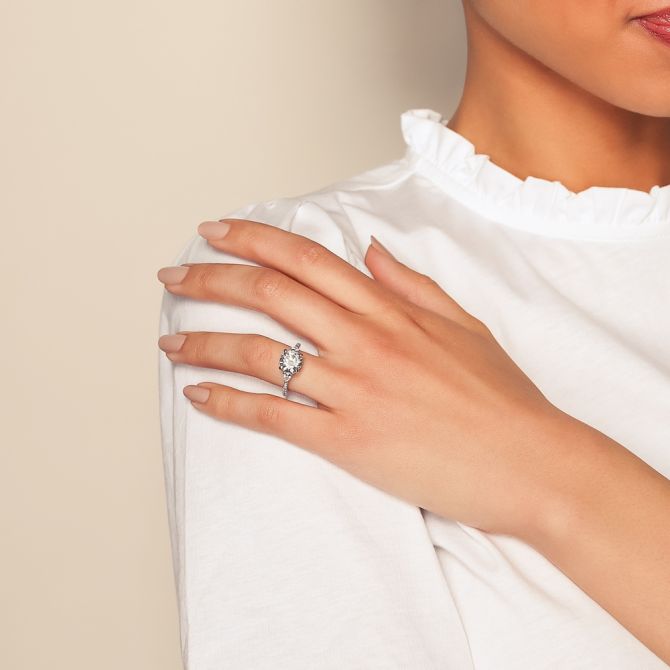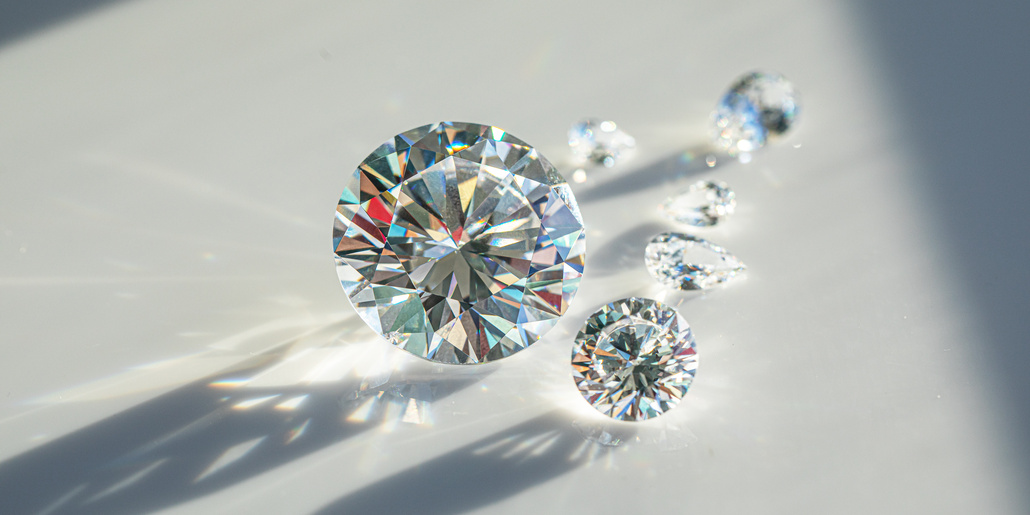The dazzling display a diamond creates may seem like the work of magic, but it’s actually the result of four fundamental visual qualities. Fire, brilliance, scintillation and symmetry all work together to produce that otherworldly glow. Keep reading to learn why a diamond shines the way it does.
What Is Diamond Fire?
Fire refers to the flashes of color—reds, blues, yellows and greens—that you see in a diamond when it catches the light. This happens when white light enters the diamond, bends (or disperses) and exits as a spectrum of color.
Fire is influenced by several factors:
- Cut quality: Precise angles and facet alignment increase dispersion.
- Lighting: Spot lighting (like jewelry store lighting) enhances fire.
- Diamond clarity and color: Fewer inclusions and higher color grades allow light to pass through more cleanly.
What Is Diamond Brilliance?
Brilliance—also called brightness—describes the white light that reflects from both the surface and the interior of a diamond. It’s what gives the stone its overall shine and luminous look, especially noticeable in daylight or soft lighting.
Brilliance depends on a combination of elements:
- Cut: A well-cut diamond reflects the maximum amount of white light back to your eyes.
- Proportions and symmetry: Poorly cut diamonds leak light instead of reflecting it, resulting in a dull or muted appearance.
Which Diamond Cut Has the Most Brilliance?
The round brilliant cut is the most brilliant of all diamond shapes. With 57 or 58 perfectly aligned facets, it’s specifically engineered to reflect the maximum amount of white light, giving it unmatched sparkle and shine.

What Is Diamond Scintillation?
Scintillation is the sparkle you see when a diamond moves—or when you move around it. It’s the interplay of light and dark areas, along with quick flashes, that give a diamond its signature “twinkle.” There are two types of scintillation:
- White scintillation: Flashes of white light.
- Colored scintillation: Flashes of spectral color (closely related to fire).
Scintillation is determined by:
- Facet pattern and symmetry: Even, well-placed facets create a balanced sparkle.
- Lighting and movement: Scintillation becomes visible only when the diamond or the observer is in motion.
What Is Diamond Symmetry?
Symmetry measures the precision and alignment of a diamond’s facets. It’s more than just aesthetics—symmetry directly affects how light travels within a diamond. Misaligned facets can disrupt light paths, diminishing brilliance and fire, while excellent symmetry ensures balanced and consistent light reflection. Graded on a scale from Excellent to Poor, symmetry is a key component in a diamond’s cut grade and overall beauty.
Become more of a diamond expert, like us, by learning through our Engagement Education guides. Book a private appointment online today to experience the marvel for yourself.

